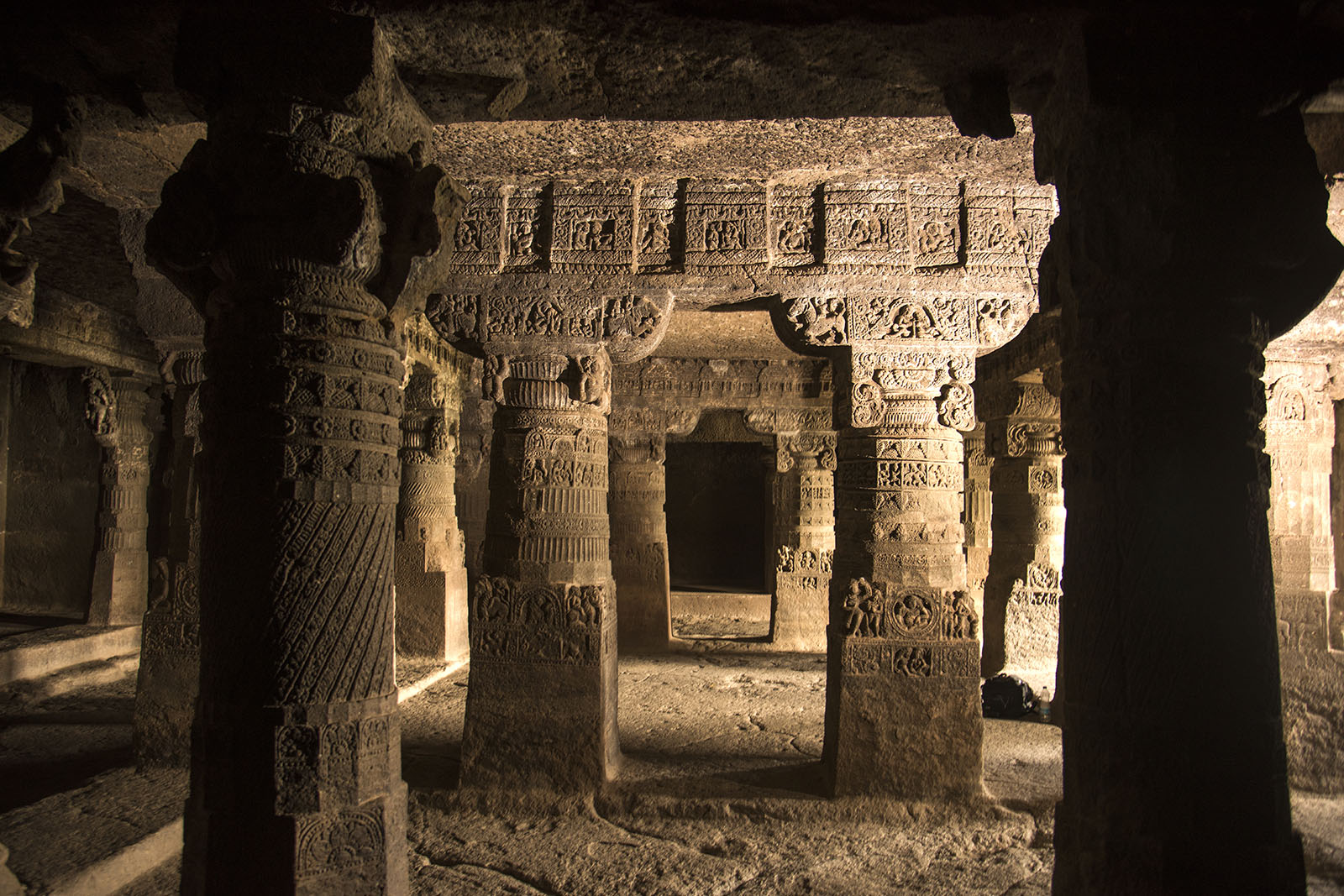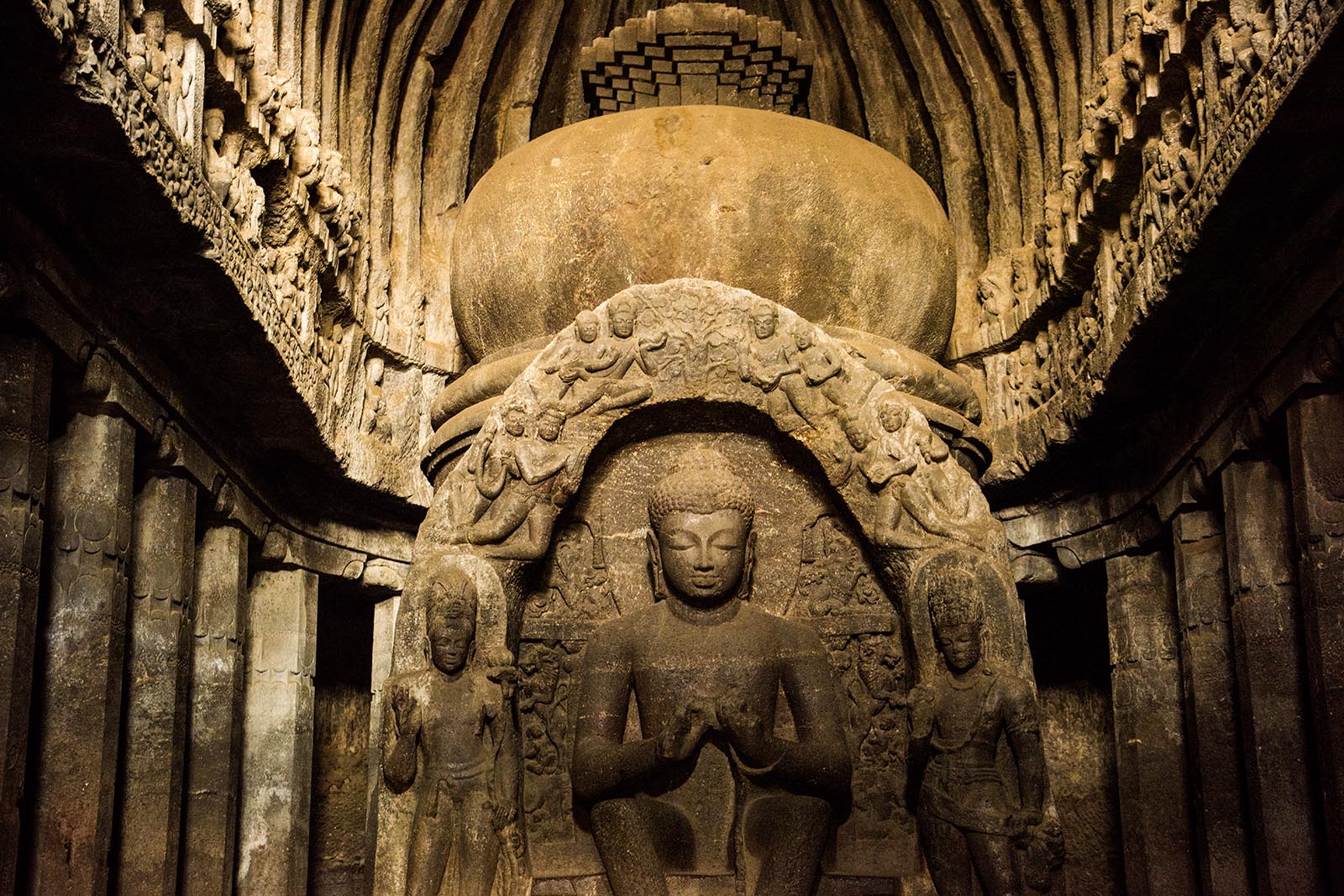ARTICLE
Rock-cut Sculpture
The sculptural elements of later caves at long-patronised sites such as Ellora were often carved in imitation of earlier ones, or other important sites. The rock-cut temples of Badami and Aihole borrow elements from the earlier Ajanta and Udayagiri style as well as the stricter Ellora style. The largely Hindu temples at these sites, all built with the patronage of the Chalukya Dynasty in the sixth century, are carved from soft red sandstone, which allowed for naturalistic and densely composed reliefs.
In the seventh century, the period following the Pallava king Narasimhavarman I’s victory over the Chalukyas saw a large number of rock-cut structures being carved from the granite boulders and caves at the newly established town of Mamallapuram in present-day Tamil Nadu, all of which were in some way designed to memorialise the victory. Stylistically, the rock reliefs of Mamallapuram are rougher and more rigid than those of caves in western India and the Deccan. This is partly due to the lack of specialised craftsmen for rock-cut sculpture in the region and partly a difference in material: the basalt rock of the Deccan and the sandstone at Badami and Aihole are softer and relatively easy to carve than the granite boulders at Mamallapuram.
Built toward the end of the tenth century, the Gomateshvara statue dedicated to the Jain figure Bahubali, is the world’s largest rock-cut sculpture at a height of seventeen metres. Situated in the town of Shravanabelagola in Karnataka, it is carved entirely from a single block of granite. There are also a few significant examples of monumental rock reliefs beyond the subcontinent. Carved on a sandstone cliff, the two sixth- and seventh-century Bamiyan Buddhas in present-day Afghanistan, measuring 55 and 38 metres respectively, were the largest known examples of Gandhara sculpture before their destruction in 2001 by the then-incumbent Taliban government.
Despite their large numbers, very rarely are the artisans of these sculptures identified, even when inscriptions of patrons or dedications are present. Moreover, most artisans worked in guilds, and individual contribution was secondary to collective work, especially in the case of lower caste artisans who worked on temples dedicated to upper caste worship.
Bibliography
Our website is currently undergoing maintenance and re-design, due to which we have had to take down some of our bibliographies. While these will be re-published shortly, you can request references for specific articles by writing to hellomapacademy@map-india.org.









